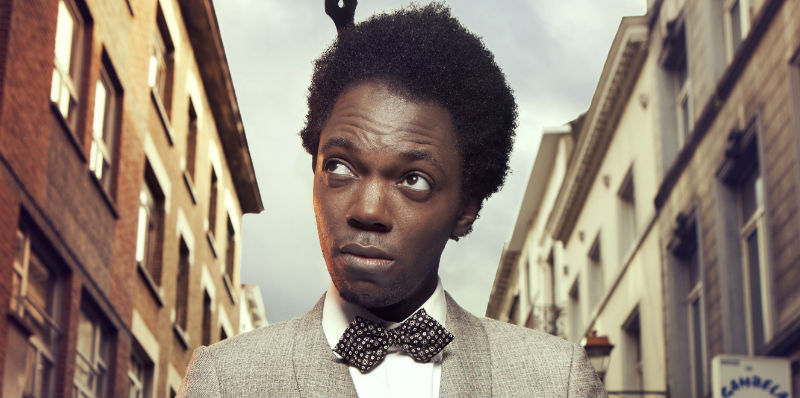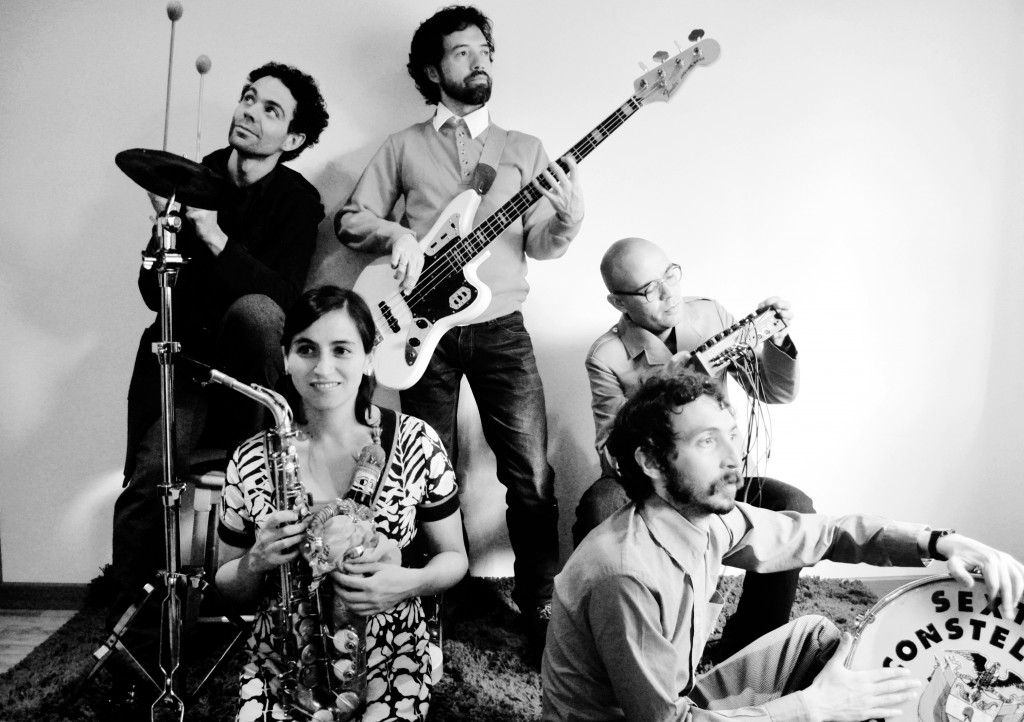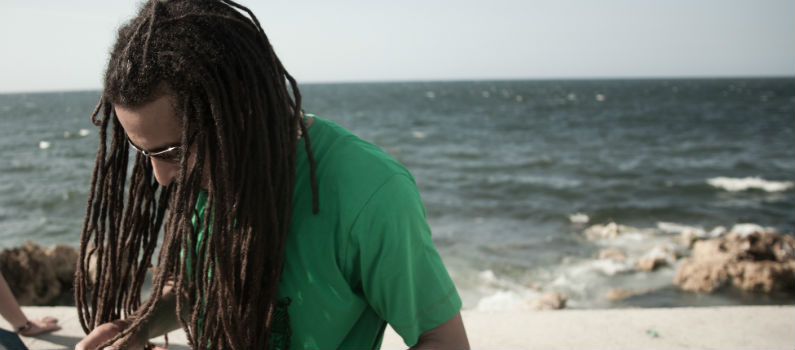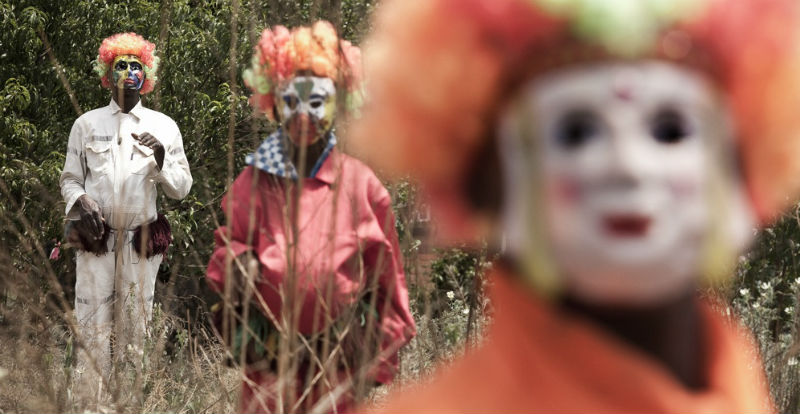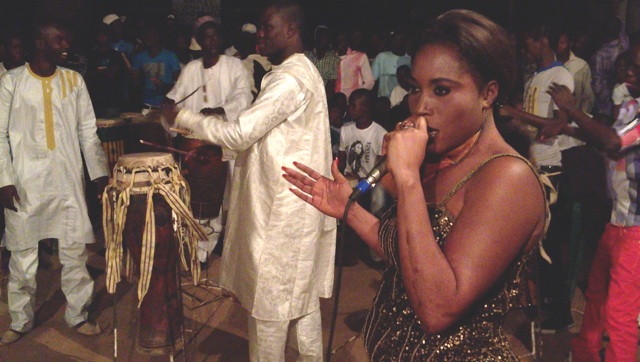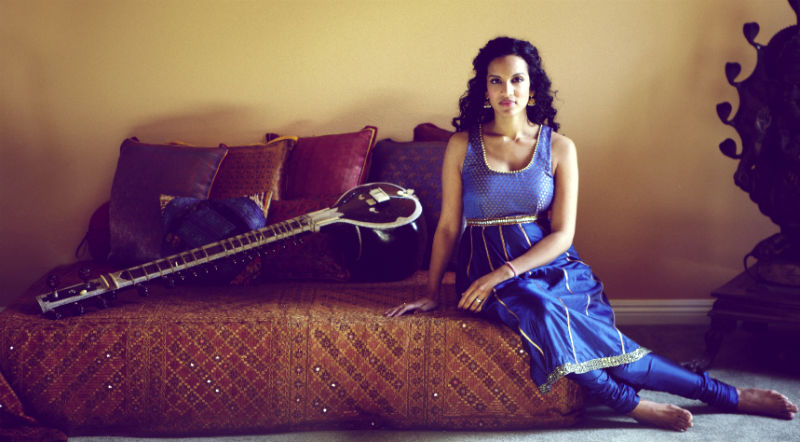
Sitar player and composer Anoushka Shankar is deeply rooted in Indian classical music, having studied exclusively with her father, the legendary Ravi Shankar, from the age of nine. Thriving as a composer, she has been exploring fertile ground in the crossover between Indian music and a variety of genres including flamenco, electronica, jazz and Western classical music. Twice-nominated for a Grammy Award, Anoushka was the first Indian musician to perform at the Grammy Awards in 2006 when she was nominated for Rise, soon after becoming the youngest-ever nominee and the first woman nominated in the World Music category, for her album Live at Carnegie Hall in 2002.
Author Archives: markus

Baloji
Clandestino Botnik 27 July Bottna
“I’m Goin’ Home…nakuenda”. This is how Baloji ended his album ‘Hotel Impala’. To this Congolese Belgian who was born in Lubumbashi in 1978 and grew up in Wallonia in crisis, though, these final words marked a new beginning. “Over there, I don’t feel totally Congolese and here, I don’t particularly feel Belgian.” This is what this album was about. About the quest for the identity of a man in his early thirties. From spiritual soul to mouth drum, his texts reflect all episodes of his life. “The album is my response to a question from my biological mother during our only telephone conversation in April 2005 ‘What have you been up to over the past 25 years?’”
“I’m Goin’ Home”. This is how “Nakuenda” begins, which means “return” in Swahili. The track is an adaptation of a theme by Marvin Gaye, who, like Baloji, came to Ostend in 1981, the port where the boy disembarked in the same year. But Gaye was, above all, his father’s hero, who returned to his country. “I can see myself living there, in due course. In any event, I have to go back. I have no choice.” This is how the long-limbed artist spoke about his native country in December 2007. He also admitted that he became increasingly interested in African sounds, from Dollar Brand to balafon, “an instrument that has the potential of blending in on set.”
In late October 2008, not even a year later, Baloji put his money where his mouth was and saw his wish come true. “A Belgian institution approached me with the request to organise a creative writing workshop, with a concert to finish it off. But I preferred to make a record first. This is how in April, I came over for a week to explore this area. Seven months later, we left, armed with our computers, sound cards, a few microphones and a lunch box …” Along with two accomplices in the luggage: sound engineer Cyril Harrison and base player Didier Likeng, who have created arrangements in the great Cameroon choir tradition. The mission was to make an album that sounded like an in-situ version of ’Hotel Impala’ “All the groundwork had been done, nothing was down on paper, everything was improvised!”
For a week, the musicians of the Congolese melting pot will give their all: a trio of balafons, voices of all different vocal colours, narrators, toaster or soul sister, the entire group Zaïko Langa-Langa, as well as Konono Nr. 1 and his likembés, the vocal ensemble “La Grâce”, with a name that is just as predestined as that of La Confiance fanfare … Most musicians blow into bagpipe-type instruments that they knocked up, or patched up, themselves or that have seen better days. ”This is precisely what adds this unique patina to the sounds. No two bars are exactly the same, no need for metronomes. Effects are superfluous, everything is done acoustically. Even the distortions of the guitars are natural. Even when the guitars are not tuned, they play accurately.” Instinctively, in the moment, concisely. The spectacle kicks off with the orchestra La Katuba, a combo named after the immense ghetto in Lubumbashi where Baloji’s mother lives. In fact, this afro-soul-jazz group that has been formed on the spot acts as a linchpin around which the others wrap their rhythmic bases and melodic lines in all kinds of possible ways.
A “back to the roots” experience which, to Baloji, is more like “back to the future”. Hotel Impala has been repainted in local colours, elegant rhythms and expressive guitars, inherited from Dr Nico and Franco, two Congolese music legends whom Baloji admires greatly. “I have always dreamt of guitars in urban music.” Eventually, he completely reconstructed the repertoire and adapted the lyrics and music accordingly. Baloji built a very heterogeneous universe, his universe. An original soundtrack that takes its inspiration from the fertile earth of his roots and is entitled “Kinshasa Succursale”, with reference to his own environment. The world of a child who grew up in economic exile, of a pan-African who came out of the ashes of Lumumba, a sharp mind who only seeks to reconciliate and wake up old spirits.
This is probably why, when he sings in Swahili, the forbidden language under Mobutu, they respond to him in Lingala and Tshiluba. As a symbol for the many horizons that have been explored and the variety of registers that this new work offers: the traditional rumba, the retro-futuristic tradi-modern style, the swinging mutuashi, the more apt sébéné, the soukous, but also the fully acoustic folk music, the ska roots or the reggae lover, dowsed in a local dressing, the Nigerian afro funk … A diversity of styles with Baloji’s unique vocal sounds that marries the whole thing up. The gaze is firmly fixed on the future, there is no looking back now. “This album had to be a response to ‘Hotel Impala’, but eventually ended up something completely different.”
A story that is always the same, yet different.. This sums up “Kinshasa Succursale”. The album is so much more than a simple adaptation, much better than a response effect. As he puts it in the symbolic ‘Nazongi ndako / Nakuenda’: “Sometimes I say to myself that it is better not to know, even if there are two sides to each story. My story is made up of loose fragments, broken like my timbre. A great distance separated us from the free zone, which separated the innocent from the victim, the right moment of opportunism, but prior to that I would never have been ready to meet my brothers after twenty-five years.” This is how he draws a line under his recent past by means of these sensual sounds and spiritual words.
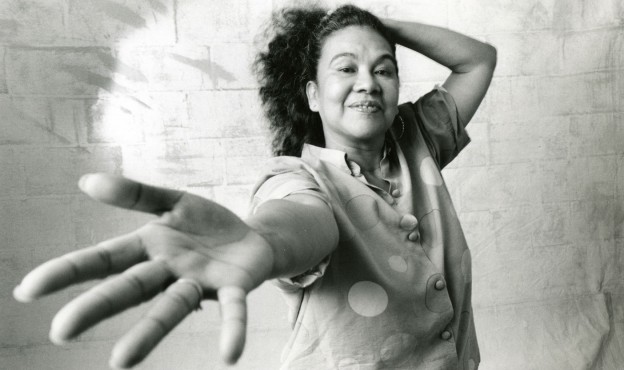
Totó La Momposina
Clandestino Festival summer edition 8 June Stora Teatern
Colombia’s indigenous music is a heavily rhythmic hybrid of Spanish, native South American, and Afro-Cuban influences. Totó La Momposina exemplifies the living tradition of Colombian folk music, having carefully studied and performed her native song and dance for several decades. She eventually became one of the most prominent names in this musical tradition, and was invited to perform at the 1982 Nobel Prize ceremony for Colombian novelist Gabriel Garcia Marquez.
She is called the Original Queen of Cumbia. Cumbia is the percussive style characterised by off-beat polyrhythms and repetitive melodies, which originated in Afro-Colombian communities in the Atlantic coast region of Colombia, and may have appeared as early as the 1700s. Its name is widely believed to have come from the Guinean cumbe dance of West Africa. Today it is one of the most influential and best-loved musical exports of the region. Toto’s music has touched artists far and wide, from Timbaland (his ‘Indian Flute’ samples Toto’s Curura) to Manu Chao (who borrowed a chorus from La Verdolaga).
Totó La Momposina was born in the village of Talaigua, on an island in the Magdalena River near Colombia’s northern coast, into a family of musicians. As a teenager, La Momposina traveled up and down the Colombian coast, studying the music and dance of the various villages, music from celebrations and everyday work songs. At the same time, La Momposina was honing her vocal and performance skills as well, discovering a rich power in her voice that soon made her very popular. In her twenties, La Momposina formed her own band, and begun dreaming of building a professional career. She now also embraced other Latin American traditions such as Cuban son, guaracha and bolero. Word of her vocal skills spread quickly, and by the ’70s, she had begun making international appearances, touring Europe and North America. She spent four years in Paris studying at the Sorbonne. During this time, La Momposina recorded her first album, “Totó La Momposina Y Sus Tambores” (Auvidisc 1985). She returned to Colombia two years later, and also traveled to Cuba to continue her studies. In 1991, La Momposina collaborated with Peter Gabriel, playing at his WOMAD concert festival and recorded a second album for Gabriel’s Real World label: “La Candela Viva”, released in 1993. She has continued to perform across the globe ever since, now incorporating her grandchildren, as well as her children, into her large performing troupe.
Download press kit here

Meridian Brothers
Clandestino Festival spring edition 4 May Stora Teatern
Hypnotic rhythms. Skeleton guitars. Fairytale saxophones. Beeping Farfisa organs and synths that seems to be directly imported from ancient Sci-Fi films. Meridian Brothers is a tropical / psychedelic group from Colombia. Born in Bogotá in 1998 and based on the musical interests of composer Eblis Alvarez, in the beginning, the project was focused exclusively on cassette recordings and experimentation with alternative ways of playing instruments and electronic media. From a conceptual band where Alvarez played all the instruments, Meridian Brothers evolved into a live combo that meets Maria Valencia (saxophone, clarinet, percussion and synthesizers), Damian Ponce (Percussion), Cesar Quevedo (bass) and Alejandro Forero (electronics and synthesizers).
Apart from its biting humor, the surrealism of Meridian Brothers lyrics come together with disparate personal allusions of vallenato, cumbia, “chucuchucu” (a Colombian way to call some type of dance music) salsa , and in general, many dance music in a very particular style, twisted and ingeniously transformed.
Meridian Brothers has toured in important festivals in Colombia, Mexico, Ecuador, Germany, Denmark and Holland. Currently the band promotes 3 albums released with the bogotan label La Distritofónica, a 7 ” with the New York based label Names you can trust and the album released with the label Soundway Records “Desesperanza “, dedicated exclusively to salsa and tropical music.
FROM PREVIOUS REVIEWS:
“…It is truly one of most inventive and singular groups you will hear from Colombia or anywhere, as you can hear on this 7″, and well worth discovering” Sounds and Colors Magazine, England
“…This mysterious solo project from Eblis Alvarez is one of the more quirky gems I’ve heard recently. Silly, funny, twisted and cheesy in a most charming way. Somewhere between the Penguin Cafe Orchestra and the Residents, with a handful of infectious Latin dance grooves thrown in for good measure, lies the land of the Meridian Brothers VI. Put this on at your next party let the natives go wild. You could do lots worse! – BLG” Downtown music gallery, New York
Download press kit here
Cairo underground: Mazaher
 We are proud to present the first booking of this year’s Clandestino Botnik – our festival excursion to Bohuslän, 27-28 July: Mazaher, the Egyptian Zār masters. Zār is the name of an underground music and dance phenomenon from the middle east which has been performed for centuries primarily by and for women from the lower classes. Some have called it a sort of exorcism but it also serves other, more down-to-earth purposes | More about Mazaher | Video |
We are proud to present the first booking of this year’s Clandestino Botnik – our festival excursion to Bohuslän, 27-28 July: Mazaher, the Egyptian Zār masters. Zār is the name of an underground music and dance phenomenon from the middle east which has been performed for centuries primarily by and for women from the lower classes. Some have called it a sort of exorcism but it also serves other, more down-to-earth purposes | More about Mazaher | Video |
Clandestino Botnik takes place in Bottna, in municipality of Tanum (near Gerlesborgs konstskola) 27-28 juli. | Tickets (search “Botnik”)
Mariem Hassan to Clandestino 4 May
Mariem Hassan, with her very special ornamented and almost bluesy singing voice, is often called the most prominent musician of Western Sahara. She is a figurehead of women’s liberation in Northen Africa, but also a symbol of the Sahrawi people’s fight for liberation from first the Spanish colonial power and later the Moroccan occupation. Lacking a better description, her music is sometimes described as a fierier version of desert blues band Tinariwen. Read more here.
Tickets to Clandestino Festival 2013 here.
Mala – dubstep à la Havanna
We are excited to announce that we have booked Mala in Cuba to Clandestino Festival’s spring edition, at Stora Teatern in Gothenburg 4 May. Mala is a producer, DJ, label owner and visionary best known for his contributions to the scene known as dubstep. But to people who have been touched by his music or moved by his DJing, he holds a deeper place in their hearts. Through certain frequencies, his music carries a message that fundamentally connects people.
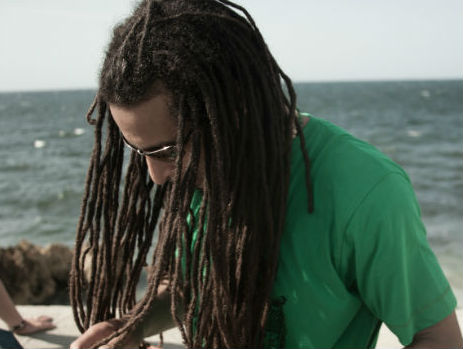
Mala in Cuba
Clandestino Festival spring edition 4 May Stora Teatern
Mala is a producer, DJ, label owner and visionary best known for his contributions to the scene known as dubstep. But to people who have been touched by his music or moved by his DJing, he holds a deeper place in their hearts. Through certain frequencies, his music carries a message that fundamentally connects people.
Mala began spreading this message from South London in the early ‘00s, when the dubstep scene was a tiny, ignored community of likeminded individuals, committed to exploration and imbibing of subsonic frequencies in locations like the record shop Big Apple, club FWD>> at Plastic People and pirate station Rinse FM. He formed production outfit Digital Mystikz with one friend Coki and by adding two others, Loefah and St Pokes, they launched the DMZ night, the first club night to share dubstep on a wider scale.
His music was first cut to dubplate and played by pioneering DJ, Hatcha and released on his label Big Apple Records. As the music began to flow, the DMZ label was born to share it on vinyl and now, years later, those records are viewed as foundational dubstep milestones. Tracks like “Learn” displayed Mala’s breathtaking and intuitive sense of rhythm, while “Anti War Dub” – played the weekend after the 7/7 London tube bombings – showed both Mala’s talent for uplifting percussive groove but his ability to express message and meaning through his music.
As dubstep began to shift from tiny collective to national and then international movement, Mala was at the forefront of the wave, able to take his frequencies to ever increasing audiences and communities. The Deep Medi label was formed and began showcasing likeminded production talent from beyond the DMZ stable, releasing to date, 58 12” vinyl singles and 7 artist albums. Mala himself released his longplayer “Return II Space.” His music has been used in major motion pictures (“Children of Men”) and he has had the opportunity to remix and connect with likeminded artists from other movements like NYC’s Francois K, Moritz Von Ozwald from Basic Channel, Grace Jones, and Lee “Scratch” Perry, amongst others. This year he launched his new night System.
Fundamentally however, scenes, gig sizes, notable collaborations and major motion picture soundtracks are milestones of little import to someone like Mala. What was and remains central to him is his deep connection with sound and his ability to create frequencies and harmonics that share that connection in a way that blissfully, powerfully and peacefully unifies all those who listen.
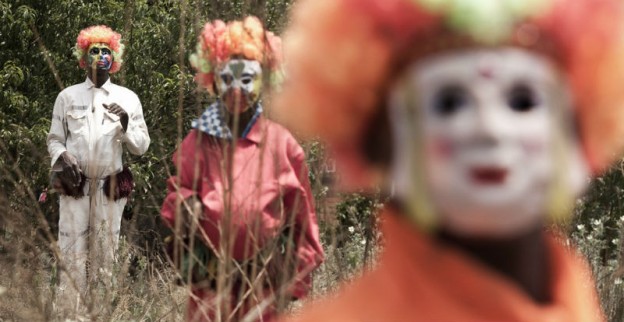
Shangaan Electro
Clandestino Botnik 27 July Bottna
“It’s fantastic, best thing I’ve heard for a long time. It’s how music should be” – Karin Dreijer Andersson (The Knife/Fever Ray)
Question: What goes bleep bloop like an 8 bit video game, wears orange colored whigs and dances faster than 180 BPM? Answer: Shangaan Electro. The name of both a musical style and a group from Johannesburg.
Synthetic marimba licks. Soulful singing on top of a grid of outrageously maxed electronic beats. It sounds as if Super Mario ate one too many mushrooms, went down one of those green pipes and came out in a South African shanty town: A humoruos, mega artificial dance music saturated by plenty of harmful coloring agents and lots of call and respons chanting. And at the same time a hyper local music, made and consumed by the Shangaan people who live around the cities of Johannesburg and Limpopo – one of the most marginalized groups in South Africa.
The epicenter of the movement is in Soweto: Producer Richard ”The Dog” Mthethwa runs the operation from a small room next to his kitchen. It is here that he writes, sings, produces and organizes Shangaan Electro. ”I even copy the cassettes myself and silk screen the covers”, he writes on his website.
The obscure music scene suddenly became viral around 2010 thanks to some videos that Mththwa made. Wills Glasspiegel of Afropop Worldwide found them on the Internet late one evening in his Brooklyn home. He became obsessed with the idea of releasing a compilation and flew to Johannesburg where he met with Mthethwa. Record label Honest Jon’s soon put out the compilation, entitled ”Shangaan Electro”, and is releasing a sequel this year: a collection of remixes called ”Shangaan Shake”. The local underdog music was suddenly on just the right turntables at the right time, as ears from around the world turned curiously towards African electronic pop.
The live band Shangaan Electro consists of The Dog himself – Richard Mthethwa – on vocals and keyboards, the group Tshetsha Boys who perform wearing clowns masks the singers Tiyiselani och Nkata Mawewe and a group of dancers.
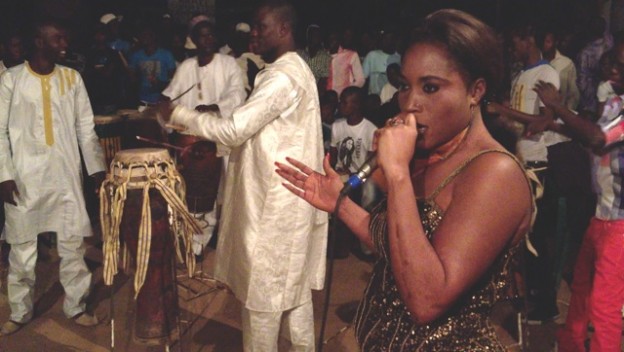
Mark Ernestus presents Jeri-Jeri
Clandestino Festival summer edition 8 June Stora Teatern
A German techno purist meets a gang of Senegal’s tightest drummers. Could the result possibly be anything but a rhythmic weapon of mass distraction?
Mark Ernestus, known from various projects including the seriously minimal dub and techno duo / record label Basic Channel, has been busy recently remixing afrobeat artist Tony Allen and Congolese group Konono No 1. He was also involved in the production of a compilation of songs by Shangaan Electro (who played at Clandestino last summer). In 2011, Ernestus embarced on a trip to Senegal, looking for recordings of local pop music that he intended to sample for his own projects. But his plans changed, after he instantly fell in love with the music style Mbalax.
Mbalax music was developed in the late seventees by artists like The Star Band, whose singer Youssou N’Dour would later become one of the biggest stars of the continent. It is an urban dance music built up by extremely tight, clattering beats performed on sabar and bugarabu drums, feeding a constant stream of polyrhythmic thirtysecond notes and triplets. Mbalax also consists of equal parts western rock, blues, jazz and french varieté music, caribbean dance music and synth marimba-riffs in a feverish tempo.
Techno guru Ernestus’ trip resulted in much more than just shopping obscure records: He ended up recording some twenty of Senegal’s best musicians in the famous Dakar Studio: A group sabar drummers from Kaolack led by Bakane Seck, the singer Mbene Diatta Seck, several guest musicians and vocalists some of which are from Youssou N’Dour’s group. The sum of the cardemom is a heavy and dirty, ancient and futuristic Mbalax, stripped down, and sometimes deconstructed to a sort of dub-versions. The collaboration is available on disc through Honest Jon’s, but a musical fusion as explosive as this one should really be experienced live with a big band, dancers and Ernestus performing live dub mixing.
